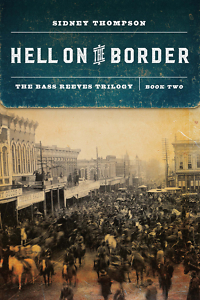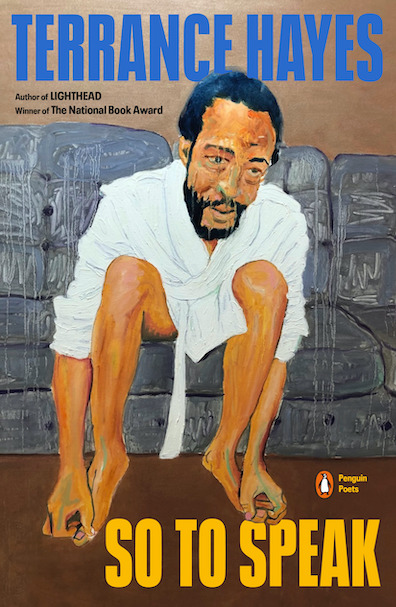Turning Back Evil
Hell on the Border continues the true story of a larger-than-life lawman
In Follow the Angels, Follow the Doves, Sidney Thompson told the coming-of-age story of an enslaved Arkansan, Bass Reeves, who is pressed into service for the Confederate army. After surviving a major defeat in the Battle of Pea Ridge near the end of the first book, the young sharpshooter escapes his cruel master and crosses into the Indian Territories — a wild place that will one day be called Oklahoma. Hell on the Border, the second novel in a planned trilogy on Reeves, picks up more than two decades after the first one left off.

When Hell on the Border opens, Reeves is still in the Territories, with a well-established reputation as one of the best lawmen in the U.S. Marshal Service. Under instructions from the “Hanging Judge” Isaac Parker in Ft. Smith, Arkansas, Reeves and his crew routinely venture beyond the “dead line” to bring in wanted desperadoes — whom he captures alive more often than not. He is married, with 10 children and a home not far from the plantation where he was raised. He is known for giving silver dollars to those who aid him in his travels and for using stealth and disguise, rather than brute force, to capture criminals and return them to “Hell on the Border” — the local name for a large two-room jail in the basement beneath Judge Parker’s federal courtroom. (This jail still stands and is the subject of the novel’s single photograph, on page 160.)
The missing years since the first novel are revealed in a series of flashbacks as Marshal Reeves pursues notorious (and historically accurate) criminals like the Coldiron brothers and Jim Webb, all wanted for murder and other crimes. His skill with a pistol and horse, penchant for disguise and silver, collaboration with Native American deputies, and desire to capture rather than kill outlaws have led some to speculate that the historical Reeves was the inspiration for a 1933 radio program called “The Lone Ranger.” Western action and justice certainly figure in Hell on the Border, but they are relayed here with a nuanced lyricism, more Larry McMurtry than dime novel.
In one scene, for example, Reeves is camped for the night “under a cluster of pines in a desolate forest,” disguised as a tramp and thus sleeping outdoors, when the distant moon reminds him of watching the moon from his boyhood slave cabin. He recalls his mother telling him of a stillborn older brother and perished month-old sister he never knew. Whenever he thought of them, Thompson writes,
… he thought of what he strove for, and it was nothing less than to turn back evil more and more and not less and less. To reverse the trends of man and the history of the world, if he could, and call out evil for what it was, one slave at a time.
 The inner dreams and outer violence of the man often seem at war with one another, making for an interesting character, if also a problematic one. Action, character, description, dialogue, a clear point of view — these are the universal tools of narrative. To use them is to inhabit the lives of others, whether a writer seeks to craft fiction, nonfiction, or something in between, such as a historical novel. If the writer is skillful, the reader suspends disbelief and happily enters another life, another world.
The inner dreams and outer violence of the man often seem at war with one another, making for an interesting character, if also a problematic one. Action, character, description, dialogue, a clear point of view — these are the universal tools of narrative. To use them is to inhabit the lives of others, whether a writer seeks to craft fiction, nonfiction, or something in between, such as a historical novel. If the writer is skillful, the reader suspends disbelief and happily enters another life, another world.
But what happens when the skilled writer is a 50-something white male literature professor and the character he inhabits is a formerly enslaved Black man? The answer is often controversy. Reviews of Follow the Angels, Follow the Doves were positive — as they are likely to be for this somewhat slimmer second novel — yet the very facts of writer and protagonist echo long-running arguments.
In 1967, the novelist William Styron published a Pulitzer-winning bestseller, The Confessions of Nat Turner, which soon became a flashpoint in discussions of race. In 2016, the historian Sam Tanenhaus recounted this controversy for Vanity Fair, writing:
Today the furor over The Confessions of Nat Turner is more relevant than ever. The questions Styron struggled with continue to provoke us. Who “owns” American history? Who gets to tell which stories —and why? Is artistic license a hallowed precept or a stale presumption?
These questions have been asked of fiction before, of course, from classics like Huckleberry Finn and Uncle Tom’s Cabin to the controversial Oprah pick American Dirt. Bass Reeves, as Thompson portrays him, is a complex, compelling character, a fully evolved hero who himself struggles with issues of race. Thompson, who teaches writing and African American literature at Texas Christian University, is clearly familiar with the uncertain ground he treads, just as his character is wary when outside of the Territories “to keep the public from knowing just how many white men he was killing.”
Hell on the Border ends with Reeves held in the title jail, himself facing (as did the real Bass Reeves) trial for a murder with potential racial overtones. It provides a fitting cliffhanger for the next book in the series — and for as-yet-unresolved issues of authorship and race in American literature.

Michael Ray Taylor is the author of Hidden Nature: Wild Southern Caves. He chairs the communication and theatre arts department at Henderson State University in Arkadelphia, Arkansas.


